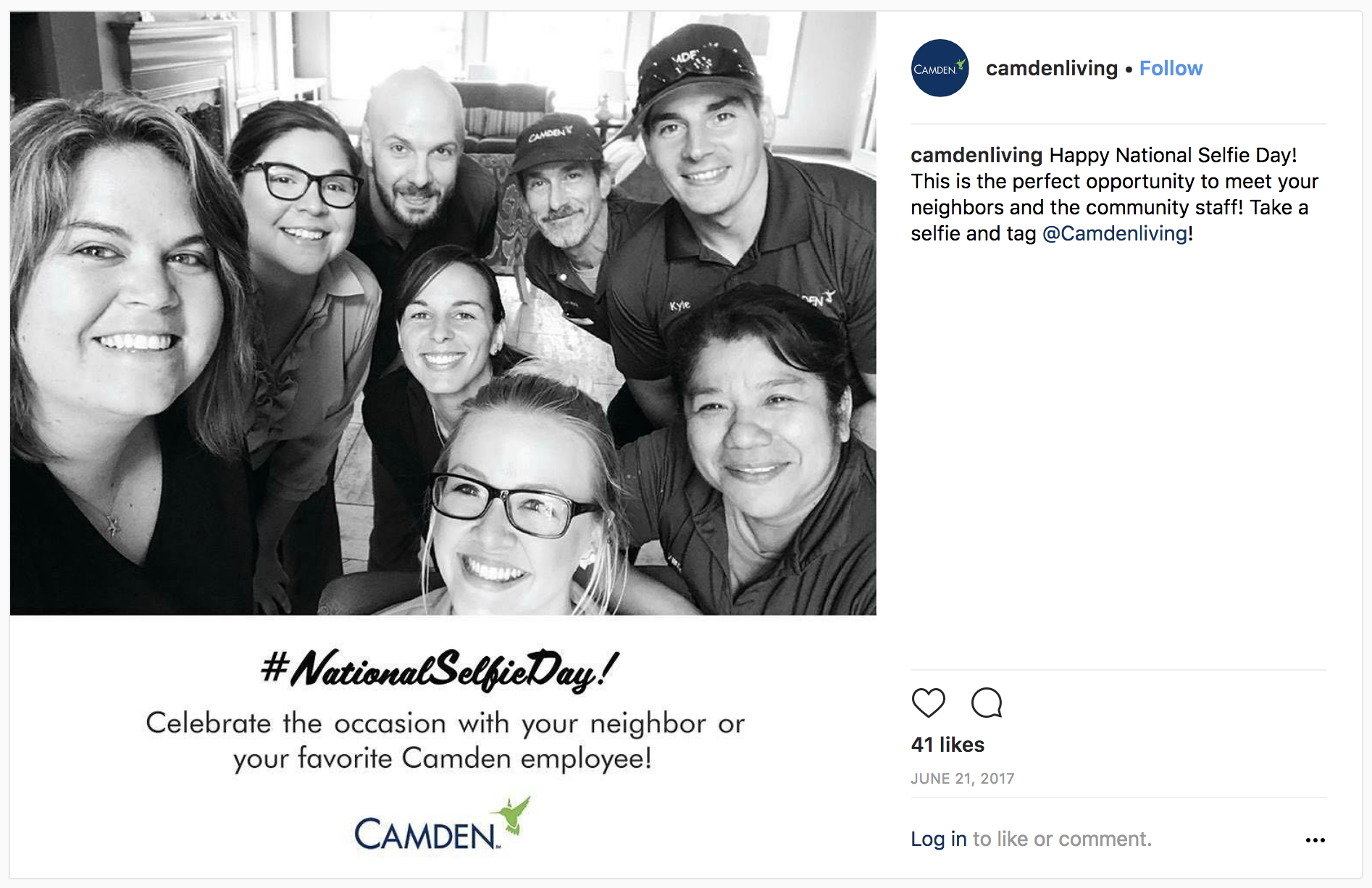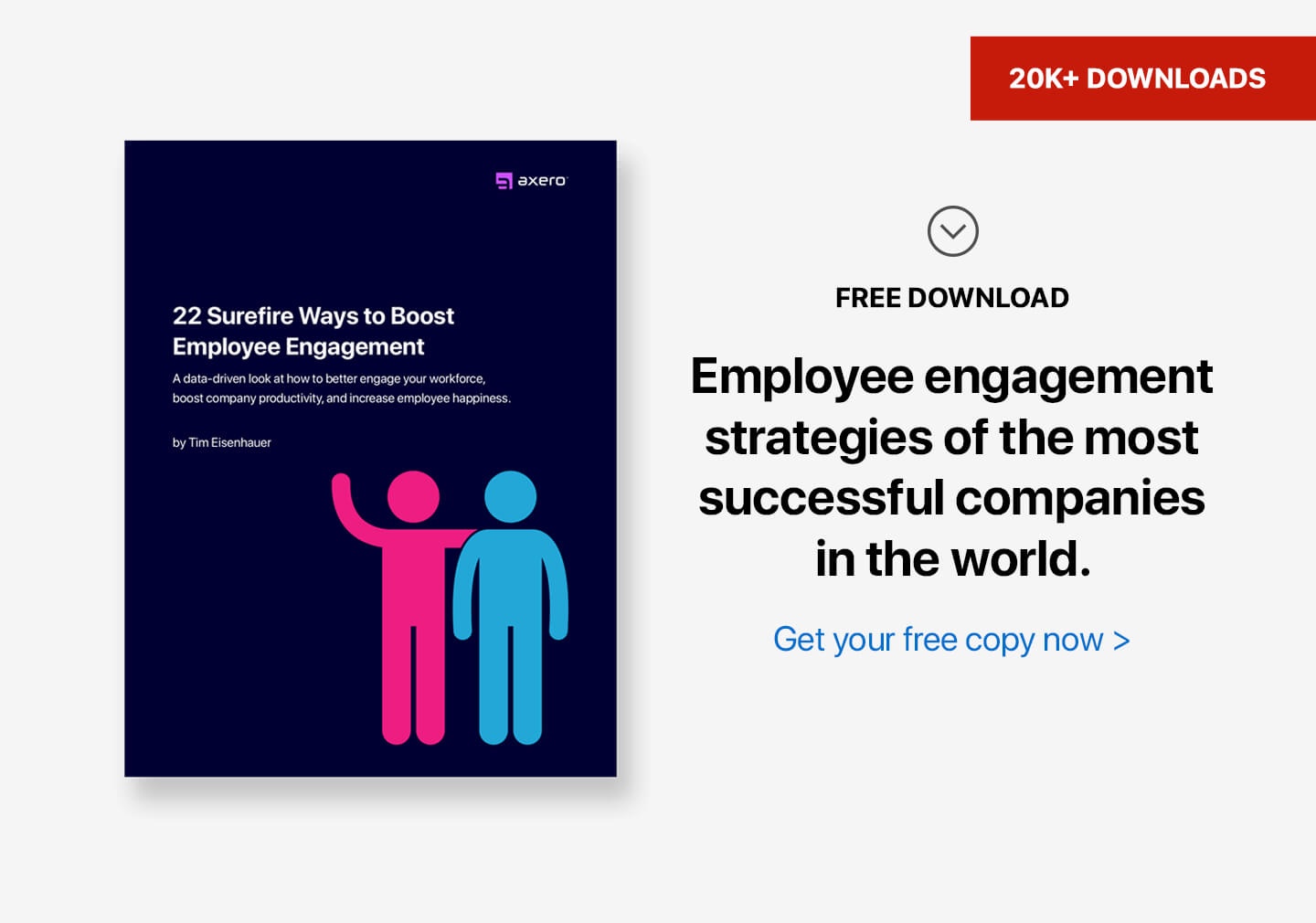“An atheist, a vegan and a CrossFitter walk into a bar, … and I know this because they told everyone within a minute.”
The first line of that joke changes every few years, but it always works to get a laugh. Certain trends inevitably turn into phenomena with cult-like followings, and people start staking their very identities on them.

Robert Cialdini, psychologist and best-selling author, noticed this too. After his book Influence: The Psychology of Persuasion brought his six principles of persuasion into public awareness, a seventh principle began to emerge in his research: the principle of unity.
Unity moves beyond the shallow similarities found in the principle of liking and goes deeper into shared identities. Introduced as a persuasion principle in Cialdini’s newest book Pre-Suasion: A Revolutionary Way to Influence and Persuade, the unity principle couldn’t have come at a more opportune time. By understanding the principle of unity, you will be able to see it everywhere even as our country and our world are dividing. You will be able to see that we are also coming together in new ways. Already touched on in my post Persuasion at Work, this principle is going to be explored deeper, and we’ll uncover some powerful methods for using it to create happier, healthier employees.
Unity Recap
You may recall from part 4 in the Persuasion Mastery Series (How to Use the Persuasion Principle of “Liking” at Work) that the recognition of “that person is like me” triggers the principle of liking. Similarly, the principle of unity is triggered with the recognition of “that person is one of us.”
The human brain is wired to categorize people into groups with shared identities. These categories are vast and include race, nationality, family, politics and religion; but some categories are less overtly cohesive such as values, beliefs and activities. When we are a member of a group, when we feel that shared identity with other people, we are more empathetic towards fellow group members. As a result, we have more influence over one another. Here’s an example: A friend who works at a hospital tells you that one of his patients is in dire need of a kidney. Your friend asks if you’d consider donating your kidney to this person. Alternatively, a woman from your church shares with you that she needs a kidney as well. To whom are you more likely to even consider giving a kidney, the stranger or the woman from your church? You share a sense of identity with your church members. You are one of them. Psychologically speaking, you’re much more likely to give a kidney to a woman from your church than to a stranger.
Politicians use this principle to their benefit on the campaign trail. They use their shared identity, or manufacture one, to emotionally connect with their constituents. Bill Clinton appeared on MTV to connect with the younger demographic while Barack Obama used YouTube videos to the same effect. Donald Trump frequently wears a baseball cap with “USA” on it likely in an attempt to connect with constituents driven strongly by national pride.
A strong genetic component is also a part of unity. Cialdini’s research has discovered that we are more likely to help someone who shares a blood tie with us. If it comes down to giving a kidney to the woman from church or to your brother, you’re much more likely to give the kidney to your brother.
Fortunately, a genetic tie isn’t necessary to trigger the principle of unity in a powerful way. You can use this principle as a unifying force in the workplace not only to improve employee happiness and productivity but also to directly impact your influence as a leader.
Think Healthy Culture First, Company Commitment Second
People are only willing to do so much for perks and paychecks. The culture you create in the workplace affects how your employees do their jobs and how they interact with customers. It also affects how your employees feel in the workplace. Rattling off examples of companies who have created healthy and galvanizing cultures is easy enough: Google, Apple, Zappos, Whole Foods, etc. The good news is that your company doesn’t have to be enterprise-sized or operate on the cutting-edge to create a culture that positively motivates employees.
Two distinctive examples of healthy company culture:
Copyblogger is an example of a company that lets shared values drive its culture. This article talks about how all five of its founders, plus many of its employees, have school-age kids, creating a strong point of connection that influences how the business is run. To uphold family-oriented values and create a culture that supports employees, the company allows remote working, offers highly flexible vacation policies and focuses on outcomes rather than time spent. These aren’t just perks; they’re necessities for employees with families. Instead of thinking, “What benefits can we offer employees?” they thought, “What do our employees need to feel happy and productive at Copyblogger?” This employee first mindset and resulting healthy culture have led to great success in a very crowded market.
Camden Property Trust is another example of employee first culture, but it approaches the concept very differently. Camden has remained on Fortune’s “100 Best Companies to Work For” list for years. In fact, between 2010 and 2016, it only fell out of the top 10 once to number 11 in 2014. It consistently ranked above cultural phenoms like Zappos, Whole Foods and REI. What’s more, the company posted above-expected returns during that period. Camden owns and manages apartment buildings in several states. Its roughly 1,700 employees fill and maintain rental properties. What is it about this company that makes those employees so excited to do their jobs? How can a property management company earn such high marks on the company culture front? The company culture actually reflects the lives and personalities of its employees. Camden has made a point of hiring fun-loving managers who frequently ask employees what they want. Their employees want three things in their work-lives:
- To see humor in everyday events.
- To bring the absurd into the workplace.
- To play practical jokes.
No joke.
From flash mobs to rigged baking contests to fighting runaway squirrels, Camden employees like to have fun. Rather than squashing that desire or relegating it to special days, Camden’s leadership has built fun into the foundation of the company culture, bringing its employees together like no pension plan ever could. Camden’s leadership isn’t left out of the equation either. President Keith Oden once launched a Nerf rocket attack on an unsuspecting vendor during a finance meeting.
Creating a healthy culture also attracts the right talent while repelling applicants who would make a bad fit. Camden’s fun-focused culture is pervasive, and if you don’t like to be silly – publicly – then Camden is not the right place for you. Camden is a great example of how a healthy, employee-first culture can create a motivational, shared identity. A shared love (in this case, a love of practical jokes) is a great way to bond people together, but it’s not the only way to trigger unity.
Common language, common ground:
A shared language can be a powerful cultural touchstone, too. Consider Google. In addition to all the other ways employees are indoctrinated into the internal culture of the company, Google employees have a shared vocabulary that outsiders won’t understand, creating a sense of identity in the very words they use to communicate with one another. Here are a few examples of Google employee jargon:
- Plex: A shortened version of Googleplex, the name of the company’s Mountain View, CA, campus.
- Noogler: What new Google employees are dubbed.
- Perf: Short for the annual performance review.
- TGIF: The name of the weekly all-hands meeting, now held in a worldwide Google Hangout.
- GUTS: Short for Google Universal Ticketing System, the system employees use to file issue reports so the company can track and fix them.
In my experience, creating a healthy employee culture that really brings people together has two rules:
- Let people have fun. Your employees will bond better when they’re laughing together.
- Say thank you … a lot. Be sure to say it with your actions as much as with your words.
Increase Transparency to Create Empathy
In an interview, Cialdini recently said, “Unity means that we want to say ‘yes’ to people with whom we share an identity more often than to people who are not part of this group. To persuade people, you can appeal to a number of common characteristics with regard to identity. If an identity like this is genuine and recognizable, you will have a greater chance of receiving a positive response to proposals or recommendations.” Note the words genuine and recognizable: in other words, transparent. Transparency does more than increase trust (though it does that in spades). It also makes your identity and your company’s more genuine and recognizable. It helps employees identify with their management and their company.
So many companies today still rely on the old “message cascade” form of internal communication – cascading communication down the leadership chain from senior executives to senior managers to individual contributors. This happens frequently in larger companies because it’s logical, but this approach has two main problems:
- It eliminates any feelings of connection employees may have with their leadership.
- It creates multiple opportunities for each message to be changed, edited or lost completely.
Both of these things kill transparency and empathy right along with it.
To trigger the principle of unity in your workplace, you’ve got to do things differently. Here are two ways to increase transparency, and with it empathy, with your employees:
- Use your team intranet to share information openly and frequently. Sharing information on a need-to-know basis is a quick road to plummeting employee morale. Use your intranet as the influential, internal communications platform it is and write blog posts about what’s going on in your company. This will help employees feel like they’re in it with you.
- Give your people a voice. If you’re the only one talking, it’s a monologue. Dialogue is how a group of people communicate. Let your employees share their ideas without fear of being punished. Yes, you’re going to hear things that are difficult to swallow, but it’s an opportunity for you to address challenges head-on while uniting your team.
Once again, your team intranet is a perfect tool for this. In your employees’ hands, it can be an internal social network that brings all your employees together, no matter where they’re working from. Take your hands off the reins and let your employees use the intranet as a platform to voice their feelings.
Create a More Family-like Atmosphere
In Pre-suasion, Cialdini tells this story about one of his college classes. Each semester, Cialdini had students and their parents each fill out surveys. He rarely had trouble getting students to complete those assignments, but the parent response was much lower (often below 20%). As an experiment, Cialdini told his students that he would give them an extra point on one test that semester if their parents completed the survey. What was the result? The parent completion rate shot to 97%. One point on one test was an insignificant reward. It probably wouldn’t help the student’s final grade. Still, once the students benefitted, even in a small way, parents complied. The reason why is because of the principle of unity. Families share an identity.
If a blood relation is there, the connection is stronger, but a blood relation doesn’t have to exist to trigger the family unifying effect. Cialdini points out in his book that members of a group have strong influence over one another and feel more deeply for one another. When a member of our group hurts, we hurt. When one member profits, we all profit. When the group is a family, this is all amplified. The parents filled out the survey because it benefitted their family, an extension of themselves.
The group concept of family doesn’t require a blood-relation component, so bringing some of that family-like feeling into the workplace culture is possible. Here are two ways to do it:
- Help your employees’ actual families.
Since a blood-relation connection creates a strong motivation in the people you are trying to influence, try offering the bonuses and benefits normally offered to customers to your employees’ family members. These benefits and bonuses can be offered in addition to, or in place of, what you already are offering. Free items, gifts, discounts, events, donations in their name – these are just a few of the ways you can benefit your employees’ families, and this will have a much bigger impact on your employees than anything you do for customers.
- Inspire a shared identity through shared aesthetics.
Company culture originates from the top. As a manager or leader, you have the ability, and the responsibility, to set the standard. This applies to the way your office looks, too. Simple things like office décor, office layout and company swag can go far in helping bring your team together.
Also consider how you want your “work family” to feel when they come into the office. Inspired? Safe? Creative? Powerful? From furniture to posters to the mugs in the breakroom, keep that feeling in mind when you’re making decisions or giving direction to the team responsible for office décor.
Next, consider how your employees work best: in a team setting or as empowered individuals. Let this guide you when it comes to the office layout. The popular “open office” concept has worked for many companies, but not all. An open layout may be a huge distraction to your team. Find out what your people prefer and let that guide your decision-making.
Finally, don’t limit your company swag to the sales team. Swag is a relatively cheap investment, and those t-shirts and tchotchkes can actually have a big impact on employee morale. Our own copywriter told us this story about when she worked for a large computer corporation.
When she first came aboard in the early 2000s, swag was everywhere. Her desk was littered with items that had the company logo on it, and her colleagues’ desks were the same. A sense of camaraderie pervaded the office during that time. They were one big work-family. Soon, though, the new swag was limited to the sales team. Eventually, even the sales team stopped getting access to it. The company was bought out by a competitor not long after. Our copywriter says she saw a clear parallel between the amount of swag around the office and company’s downfall.
You might not think swag has much impact outside of helping customers remember who you are, but it also sends a message to your employees. It helps them remember that you’re all in this together, which is the most fundamental concept behind the principle of unity.
Encourage Like-minded Employees to Come Together
The 7 Powers of Persuasion post covers this, but bringing the concept up again is important. Remember that your employees are individuals with their own interests, and many of them may share those interests without even knowing it.
A simple, yet powerful, way to bring your team together is to enable them to come together on their own, and you can use your company intranet to do it. Give your employees permission and encourage them to create intranet groups (or spaces, as we call them in Axero) for their interests. Here are some interest group examples:
- Book club
- Ski club
- Volunteer groups
- Friday night bar hopping group
- Work teams
- Project teams
- Knitting circles
- Toastmaster teams
- Sports fan groups
- Company-sponsored sports teams
- Don’t forget CrossFit
When your employees have an easy way to come together around shared interests, feeling a shared identity with all of their colleagues is easier. This feeling will lead to more empathy and support for one another.
If you’ve given your employees the tools to come together but they’re still not taking the initiative, let me share something that’s worked very well at companies with which I’ve worked: sponsor a lunch. Invite employees you know have shared interests and pick up the lunch tab so they have an opportunity to get to know each other. It works wonders.
What does all of this have to do with persuasion? When your employees are happier in the workplace and you’ve established yourself as a leader who promotes that happiness, your employees are a lot more likely to respond positively to your requests. They’re also more likely to handle the possibility of upcoming changes better when you communicate them to your employees.
3 Important Things to Remember as You Reach the Authority Master Level
Unity is not only a powerful principle of persuasion, but it’s also critical for happy employees. If you only get three things out of this post, I want it to be these three things:
- Make transparency a top priority.
- Say thank you – frequently – through both words and actions.
- Let your employees have fun.
These three things will trigger the principle of unity; will create a happier, healthier workplace for everyone; and will establish an environment of mutual respect.
Congratulations! You have now reached Unity Master Level.
This was the final installment in the Persuasion Master series. Thanks for reading.
_____
If you’re interested in persuasion and making your company a better place to work, you might like my book, because there’s all kinds of persuasive techniques and examples you can use.













 info@axerosolutions.com
info@axerosolutions.com 1-855-AXERO-55
1-855-AXERO-55


